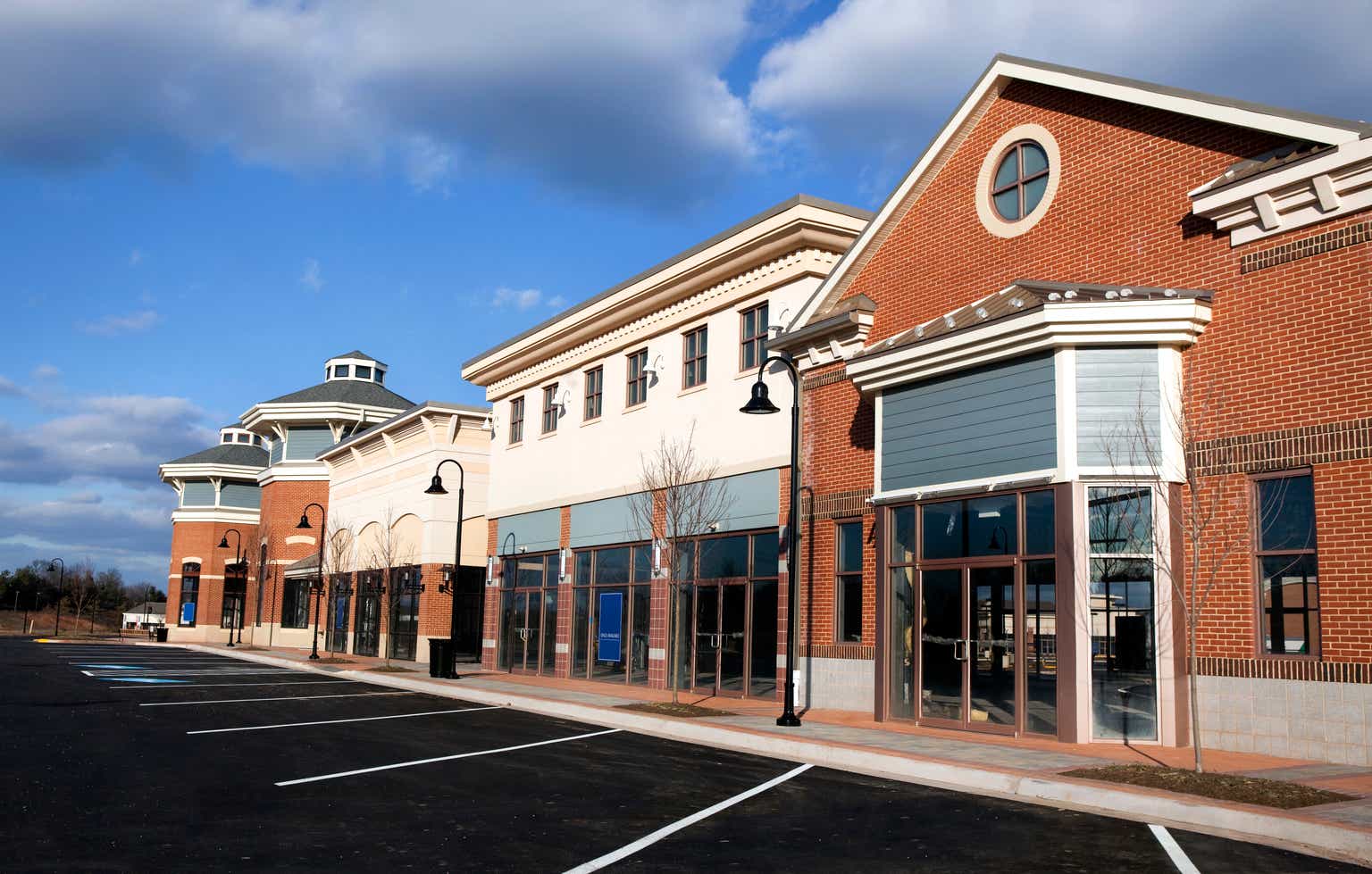The Whitestone Buy Thesis
Whitestone REIT (NYSE:WSR) has the best located properties of any shopping center REIT. All 5 of their submarkets are highly advantaged from a demand and supply standpoint, which is facilitating substantially higher rents as leases get marked to current market rates. We spot property value at around $20 per share, yet the stock is trading below $11.00. WSR’s combination of property quality, growth and valuation provide ample upside to shareholders as the cycle plays out.
In this article, we will discuss:
- Premier locations
- Leasing upside and schedule
- Debt schedule
- Overall organic growth rate
- Cap rate-based NAV
- Adjustment of cap rate for location or adjustment of NOI to market rate
- Proxy battle
- Sale or continued operation of company
- Risks to investing in Whitestone.
Whitestone’s ideal property locations
WSR has properties located in 5 markets; Phoenix, Dallas, Austin, Houston, and San Antonio.
S&P Global Market Intelligence
From a broader real estate perspective, these markets are considered high-demand growth but also high supply growth. People are moving to these cities and to accommodate the population influx, developers are building large numbers of apartments, warehouses and even a little bit of office.
With as much as 7% of existing apartment inventory being delivered in the near term, some of these markets are even a bit oversupplied, making the associated apartment REITs trade down. Eventually, demand will catch up and fully absorb the supply, but 2024 and the first half of 2025 are expected to be a bit rocky.
This is relevant to WSR, as a shopping center REIT because of the sharp contrast in supply by property type. In other sectors, the large population and job growth is met with large supply growth. Shopping centers, however, stand alone as having virtually no new development.
Green Street
Thus, the existing shopping centers get the increased demand from the growing population and jobs without any new competing supply. Supply is already tight, with occupancy of shopping centers in these markets already approaching long-term highs. Phoenix and Dallas are at long-term highs, with the other markets just a whisker away. Whitestone’s occupancy has improved from 88.7% in 2021 to 94.2% as of the most recent quarter.
WSR
As occupancy approaches the mid to high 90s, negotiation power shifts in favor of landlords. The tight occupancy amidst further increasing demand has resulted in rental rates increasing materially. As leases roll off, Whitestone is re-leasing at rates about 20% higher.
WSR
With the incoming demand, I anticipate this gap widening even further. In 4Q23, WSR was signing new leases at rates 37% higher than expiring.
WSR
Whitestone’s leasing opportunity
Since shopping centers have long-term leases, it takes a while for all of their rents to get marked to the now higher market rate. Below is WSR’s lease expiry schedule.
Supplemental
A decent chunk of leases are rolling in 2024-2028, which affords substantial organic growth opportunity. Shopping centers that were earning rent of $23 per square foot are positioned to start earning $30 per foot. That is quite a bit of organic growth.
Whitestone’s forward Growth rate
In recent time periods, WSR’s growth has been masked by interest expense growth. So while WSR had substantial same store NOI growth, much of their cheap debt had to be refinanced at the now higher interest rates. The delta in interest expense largely canceled the delta in organic revenues.
This has given the appearance of minimal growth, which explains why WSR is trading at just over 10X funds from operations, or FFO.
However, interest expense has stabilized. While given the environment, I think its unlikely interest expense will go back down anytime soon, it has stopped going up because WSR has minimal debt expiries over the next couple of years, with the larger expiries in 2026 and 2028.
Supplemental
With interest expense stable at the now higher level, Whitestone organic revenue growth can flow through to the bottom line. FFO/share and adjusted FFO, or AFFO, per share are expected to accelerate materially. Specifically, consensus estimates call for FFO/share growing from $0.91 in 2023 to $1.24 in 2026. AFFO/share is expected to grow from $0.65 in 2023 to $0.99 in 2026.
S&P Global Market Intelligence
If consensus is anywhere near correct, that is far too much growth for a company trading at just over 10X FFO.
Based on our analysis of the submarkets in which WSR operates and the substantial mark-to-market leasing opportunity, I think it will be straightforward for WSR to achieve growth at this pace.
Another potential reason WSR might be trading cheaply is that it is perceived as being high leverage. The 10-K reveals debt to undepreciated book value of assets at 50%.
10-K
Most REITs would be closer to 40% on this metric.
However, book value does not consider the appreciation of WSR’s assets since purchase.
At the time WSR acquired most of their properties, shopping centers were considered a high-risk asset class.
The fundamental outlook for the sector has improved markedly, and particularly for Whitestone’s submarkets, which are presently the best of the best.
Value of WSR’s assets
It can be a bit tricky to value assets that are presently under-earning. What I mean by this is that current rental rates are significantly below market. A buyer would, of course, look through the stabilized rental rate, so there are 2 ways to correct for it.
- Use a lower cap rate on current NOI
- Use the stabilized NOI figure.
Shopping centers would tend to trade for about a 7.8% cap rate on stabilized NOI. With about 30% mark-to-market, that translates to a 6% cap rate on existing NOI.
At a 6% cap on most recent quarter NOI, WSR’s properties are worth $20.08 per share.
S&P Global Market Intelligence
NAV already factors in debt, so this is the equity value of WSR’s assets at the given cap rate.
With Whitestone trading at $10.90, it is severely discounted to the value of its assets.
SA
The question for shareholders is, how Whitestone can realize the value of its assets.
Well, shareholders presently get to vote on the forward path due to the ongoing proxy battle.
Whitestone’s proxy battle
Erez Asset Management is an activist investor in WSR and has nominated 2 directors to replace WSR’s directors. As we discussed in a note to our Investing Group subscribers on 4/12/24:
“Their goals for the company are quite different, so I think it will be a highly impactful vote
Selling the company would be a faster way to realize the value. I think it could be sold quickly for around $15 a share. The downside of this method is that it leaves value on the table.
I am not exaggerating when I say these are the best assets of any shopping center REIT.
- The catchment radius metrics (household income) are superior
- Forward growth rates on population and jobs are superior
- Supply and demand fundamentals are highly favorable.
Due to this, purchase of WSR would be quality accretive to any of the larger shopping center REITs.
A buyout of WSR at $15 a share would be roughly FFO/share neutral to a potential buyer like Federal Realty (FRT) or InvenTrust Properties (IVT), but it would significantly increase aggregate forward growth potential.
As such, I think a company sale is a viable route to go.
Whitestone seems to be leaning toward the more patient route of operating the assets and marking rental rates to market over time. I think such a route would be much slower, but the eventual value realized should be significantly higher.
Overall, I think both strategies are quite valid, and the winner of the proxy vote will likely come down to which entity shareholders trust more.
My opinion
2nd Market Capital has been involved with WSR for a long time, often butting heads. Back in 2018, we voted our 815,000 shares against management.
Times have changed and more importantly, the company has changed.
James Mastandrea had been taking enormous compensation and otherwise running the company in what seemed to us to be his own self-interest. Whitestone successfully ousted James Mastandrea and with him the misalignment issues also disappeared. In the following years, we noticed material positive changes to the way the company was run.
- Lower G&A expense
- Removal of poison pill (broadly considered better governance)
- More strategic asset sales and purchases.
We have met with Dave Holeman (CEO that replaced Mastandrea) and the rest of the team multiple times since he took over and have been impressed by the new direction of the company. Property operating metrics are consistently coming in ahead of peers, and WSR is making progress in reducing leverage.
In contrast, we are less trusting of the activist group run by Bruce Schanzer. For those unfamiliar, he was the former CEO of Cedar Realty, which sold to Wheeler (WHLR). I did not like the way that sale was executed.
That was a significantly different situation as CDR was not in a strong position. So perhaps one could argue that some strings needed to be pulled to get the company sold. Schanzer’s intended sale of WSR could likely be handled more cleanly, as he would be selling WSR from a position of strength, given the profitability and asset quality.
Overall, I am largely indifferent between WSR remaining independent (growing through operations) and the company getting sold. In either direction, however, I would rather it be done by the in-place management team.
Based on the fundamentals and property value, I think either route results in substantial upside to shareholders who get in at this massive discount to NAV.
Risks to investing in Whitestone
An investment in WSR involves many of the typical risks of investing in equities, with some of the more notable being:
- Slightly above average leverage for a REIT
- Concentration risk in both property type and location.
These are fairly straightforward from just a quick perusal of the 10-K. Instead, I want to talk more about a risk specific to the present situation.
Proxy battles often involve mudslinging, and I think the activists have succeeded in hurting WSR’s reputation. This is potentially why the stock has fallen from $13 back down below $11.
The good news is that it will likely blow over once the shareholder meeting concludes. As a preview, one may note how Nelson Peltz has been quite silent on the matter since losing his proxy battle with Disney.
The bottom line
An atypically large gap exists between the value of WSR’s properties and the market price of WSR. Usually, it is troubled assets that are discounted in this fashion, so I find it quite opportunistic that highly advantaged assets with substantial growth ahead can be bought so cheaply.






